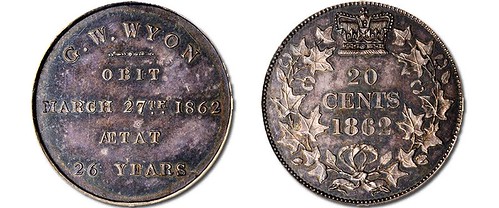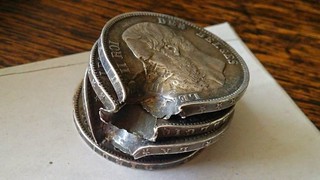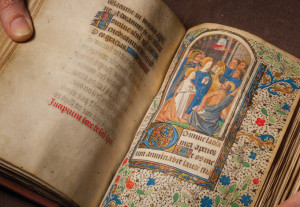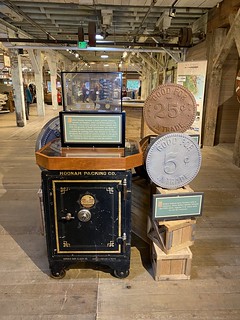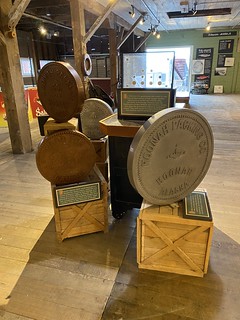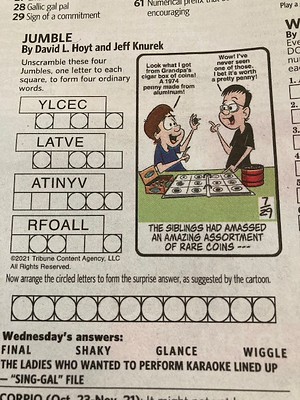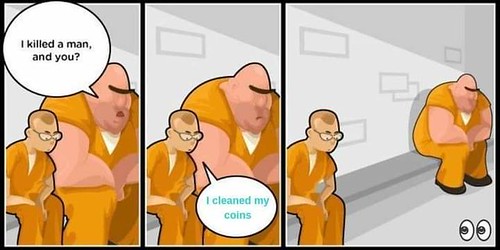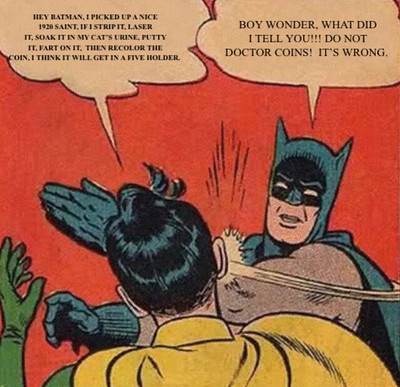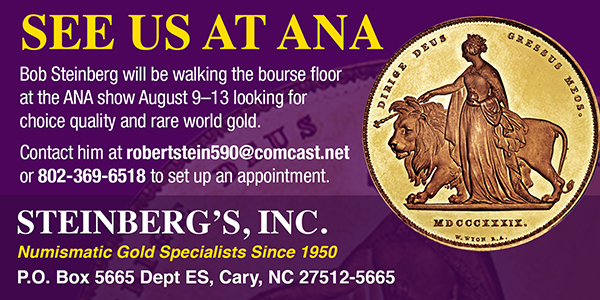
PREV ARTICLE
NEXT ARTICLE
FULL ISSUE
PREV FULL ISSUE
NOTES FROM E-SYLUM READERS: AUGUST 1, 2021On Rainbow Toning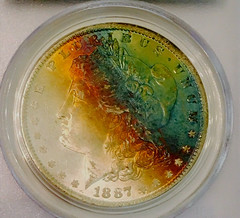 Fred Liberatore writes:
Fred Liberatore writes:
"The image of the "Rainbow Toned 1887 Morgan Dollar" quickly reminded me of the work of the coin "doctors" who have perfected this kind of toning and can do it in minutes. That sort of rainbow is characteristic of their work. There was an entire hour-long presentation at the ANA Summer Seminar in 2018 on this subject." Steve Bishop writes: "First of all, you can't necessarily judge a coin's toning accurately through a photo. In this case, the color rendition is off. It looks a lot more natural in hand. I've looked at a lot of toned coins over the years, and I can usually tell the difference between natural and artificial toning. When in doubt, I trust the experts at PCGS, who approved the grade and appearance of this piece." Thanks. Photos get better and better, but nothing beats seeing a coin in person. -Editor
To read the earlier E-Sylum article, see:
Daniel Fearon of New Malden, Surrey, England writes:
"The medallic Canadian 20 Cents about which you report, was something new to me. I turned to Leonard C. Wyon’s diaries, edited and with extensive notes by Philip Attwood and published by Spink in 2014 -
"On 27 March 1862 LCW writes,
"And on the 28 March, "The medal is dated the 27th, so perhaps George died before midnight, rather than the early hours of the 28th. One hopes the poor young man rallied before he went and was able to sample the two bottles of port and the bottle of rum." Interesting. As good a last meal as any. Thanks. -Editor
To read the earlier E-Sylum article, see:
David Tripp passed along this article with more on Robert Garrett from his grandson Jim Garrett. Thanks. -Editor The legacy of Robert Garrett lives on today through athletics and history. It was 125 years ago in the summer Olympics of 1896 that Garrett was making headlines, competing along with about 240 others. His grandson, James, said Garrett kind of stumbled into it. He was studying at Princeton University and was on the track team. His professor brought up the idea of going to Greece. "They had a blacksmith locally in Princeton make a disc, what they thought a discus was, about a foot wide, and it weighed almost 30 pounds to 27 pounds," James Garrett said. That was nearly impossible to move, let alone toss. Americans didn't know the actual size of the Greek discus, so they took their best guess. The uncertainty didn’t stop them from taking the very long journey east. Garrett grew up at the Evergreen House on North Charles Street, which is now a museum and library belonging to Johns Hopkins. He became known as the last, first Olympian, passing away in 1961. Garrett was also a passionate collector of ancient manuscripts, collecting 11,000, which is said to be the largest collection in the U.S. He ended up donating them to alma mater, Princeton University.
To read the earlier E-Sylum article, see:
Kavan Ratnatunga of Sri Lanka writes: "Since reading an earlier E-Sylum article asking if coronavirus stimulus checks Would be collectible, and another one about their security features, I was interested in a US Treasury cheque for my collection. "So on April 15th when I submitted my US Tax Return, I requested US$12 of my tax refund by cheque and the rest directly deposited as usual. The Bank Deposit went in on April 28th and when I got no check I assumed it had gotten lost. Then after 3 months on July 27th, it arrived, dated April 30th, and reposted by registered mail by the US Embassy in Colombo on July 12th. A great low-cost collectible. :-) 'The Treasury cheque has a watermark and cool security features under UV light as described. The Security features are illustrated well in the 2020 December document. What I found interesting is the microprinting on the back. I did not identify it with the reference posted previously in The E-Sylum. It is a 0.2mm high line with USA repeated." Our webmaster Bruce Perdue kindly edited Kavan's image to make the text more readable. Thanks. -Editor Kavan adds: "A good challenge to test a scanner. Mine gave the above image - 10 pixels high at 1200 dpi. Will not resolve at 300 dpi.
"Guessed correctly what numbers I need to enter for Symbol Serial which is 4+8 digits at the right end of the first line starting with Date and RTN which is 9 digits on the second line below the date without leading 000. The system replied
To read the earlier E-Sylum articles, see:
George Kolbe writes:
That would be an interesting piece of numismatic literature! -Editor
To read the earlier E-Sylum article, see:
Bob Van Arsdell writes: "The last E-Sylum passes along the discredited opinion that readers should wear gloves when handling rare books. I thought it had been established many years ago that gloves make people clumsy and increase handling damage.
"I suspect this glove misinformation may have been resurrected because of Covid-19. Some recommendations suggest contaminated books could be handled with gloves while decontaminating them. I doubt this has become standard practice, because Covid safety procedures have evolved rapidly as we learn more about transmission modes." Sorry about that - I should have commented on that mention. The primary discussion was about face masks, which come in handy for limiting damage from sneezes or nosebleeds. Bob passed along a couple article links. Thanks. -Editor
To read the complete articles, see:
Lev Messick responds: "Well, I certainly would not let any of these folks near my stamp and banknote collections. I know you are aware that we collectors use a tool called tongs for stamps. I can assure you from personal knowledge that handling a mint stamp without them will leave fingermarks. Yes, there is a famous stamp from Monaco that shows a six fingered FDR holding a stamp that way! Not recommended no matter how many fingers you have. Some banknotes also exhibit so called "Counting Marks" (AKA creases and fingermarks along their corners and edges) Now, yes, often these were from dirty as well as oily hands. I don't think we should add more oil from our hands to them. There is an interesting film showing the restoration of the Jefferson Bible at the Smithsonian that shows the restoration team wearing both masks, gloves, and using a tool (not their hands) to turn the individual book pages. So, I would say the jury is still out on pawing the Declaration of Independence or other elderly documents with your bare hands (LOL). Those of us who collect are only temporary guardians of our collections. The use of proper conservation materials and proper handling and storage is necessary to preserve what we have. As a child 70 some years ago I was taught not to handle photos with bare fingers -washed or not. Books were to be handled very carefully so as not to break their spines or crease, mark, or tear their pages. Older paper was generally made from rag material. It tends to be rather long lasting if properly cared for and protected. The use of wood pulp has made many modern books and paper very transient. "
To read the earlier E-Sylum article, see:
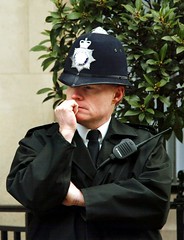 David Powell writes:
David Powell writes:
"Over here in the UK,
To read the earlier E-Sylum article, see:
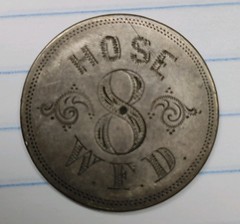 David Hoover writes:
David Hoover writes:
"I have attached a picture of what I imagine to have been a fire department badge from the mid 1800s. It is on the reverse of an 1854 seated half dollar. I have tried to figure what fire department this may have been without any luck. I did see another one pictured, with a pin still attached to the back, but that didn't provide me with any more information. Perhaps you or your readers might know more about it." Interesting item. Can anyone help? -Editor Gary Greenbaum writes: "I thought this might interest your readers. These are shots of the exhibits at the shopping area at Icy Strait Point, which is a cruise stop near Hoonah, Alaska, showing the trade tokens from there. Regrettably, none were for sale!" Cool. Thanks! -Editor David Luftig passed along this word jumble cartoon. Who got the answer? -Editor I found this one over on the Coin Talk forum. -Editor Which reminds me - I'm still cracking up over this one from a few weeks ago. -Editor
To read the Coin Talk item, see:
To read the earlier E-Sylum article, see:
Wayne Homren, Editor The Numismatic Bibliomania Society is a non-profit organization promoting numismatic literature. See our web site at coinbooks.org. To submit items for publication in The E-Sylum, write to the Editor at this address: whomren@gmail.com To subscribe go to: https://my.binhost.com/lists/listinfo/esylum All Rights Reserved. NBS Home Page Contact the NBS webmaster 
|
